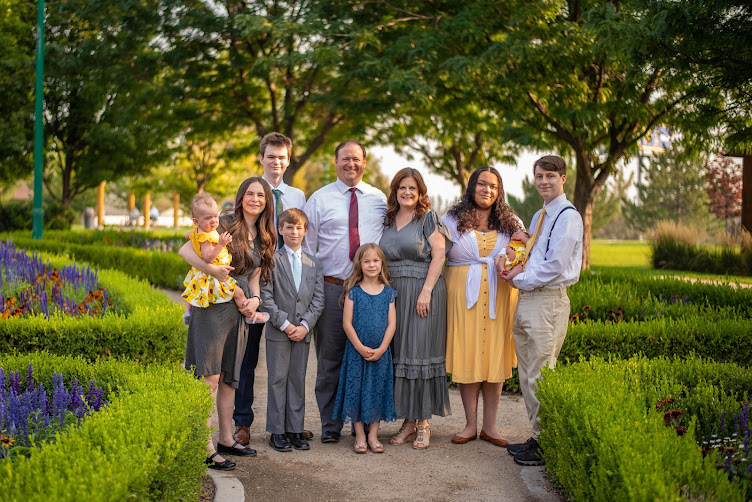How to Save Marriage in America
I hope you are in a comfy place where you can relax and read without interruption. This post is going to be really long. Sorry! I want you to read "How to Save Marriage in America" by Richard V. Reeves that was written in 2014 for The Atlantic. It is long and dense, so take your time. Then come back once you are done.
Before diving into my thoughts and questions about the article, I did have a big gripe about the entire piece. The author makes several sweeping statements without an iota of discussion or evidence proving his assertion. I realize that it is an article, not a scholarly piece for an academic journal, but without evidence and facts, his claims fall flat. If you read this article, you need to read carefully and think about the piece carefully before just accepting every claim he makes.
The article begins with this startling statistic, "In 1960, more than 70 percent of all adults were married, including nearly six in ten twenty-somethings. Half a century later, just 20 percent of 18-29 year olds were hitched in 2010." It takes awhile for Reeves to explain why this is a sobering statistic--for the sake of the children. There is a lot of evidence that suggests that children are less likely to live in poverty and are much more likely to go to college, if they have married parents. The numbers of children born to single mothers are rising and so are the numbers of children living in poverty and having fewer opportunities for educational and social advancement.
So whether or not people like it, fewer marriages are bad for the economy, bad for children, and bad for social climbing. The author explores three types of marriage models and discusses their benefits and problems, especially in relation to children and economics.
Traditional Marriage: What Reeves Gets Wrong
I felt like the discussion on the first type of marriage, Traditional Marriage, was hampered by obvious biases on the part of the author and also lacked evidence or experience with people who follow this marriage model. I felt like the author describes a marriage model based on an episode of "Leave It to Beaver" rather than a current version of such a marriage. The reality is that I know very few marriages who follow the 1950's pattern, but I know a significant number of couples whose marriages are "traditional" in the sense that the husband is the breadwinner and the wife is a homemaker.
The author correctly points to economic challenges and the reality of those challenges for families trying to live on one income. However, I've lived at all income levels, as a SAHM while my husband pursued his education and now is gainfully and fully employed, so I feel much can be endured when expectations are managed and budgets are carefully watched.
I felt like the author subtly disparaged traditional marriage throughout the article. He claims that there is no way moral values which include chastity and then complete sexual fidelity to a spouse could be revived. His description of a homemaker was simply that she keeps kids safe and fed. This simple statement reflects the authors total ignorance of the efforts of SAHMs. Clearly he has never looked on pinterest or followed a mommy board. The SAHMs I know in traditional marriages are deeply committed to educating their children and ensuring their success as adults. In today's parenting climate, that requires tremendous effort and sacrifice and moms aren't just focusing on safety and food. Furthermore, the author keeps asserting the unequal nature of these marriages. I think that he needs to do more on studying this issue. Most fathers that I know in traditional marriages are spending significant amounts of time caring for children and sharing household chores. Maybe they aren't on the same levels as the HIP marriages he profiles, but this isn't a case of dad sitting on the couch reading a paper while mother is finishing the roast. There is also the implied assertion that somehow traditional marriages didn't enjoy a period of romantic marriage before having children. (Lots of eye-rolling from that thought.) The most glaring sign that the author thinks traditional marriage is outdated is his careful sidestepping of the benefits and advantages children of these marriages have.
Reeves says, "Most Americans think marriage is not necessary for sexual fulfillment, personal happiness, or financial security, according to Pew Research. They're right." I can't argue with the poll, but Reeve's assertion that they are right is wrong.
Psychology Today flatly debunks the myth that you can find greater sexual satisfaction outside of marriage. Married couples generally report having more sex than their single counterparts and that they are happier for it.
In previous research I did in my blog post,
Are Men Obsolete?, I learned that 51% of single working women without children live at or below the poverty line. Only 12 % of women living in poverty are actually married. It is ludicrous to assert that a woman has a significant chance to attain financial security without a spouse, in fact we can safely assert that her odds of living in poverty as a single woman are much higher than if she were married. I know its not PC, but those are the numbers.
As far as the claim goes that you can find personal happiness without marriage, the science does not exactly confirm that, according to this piece from
The Greater Good. As single people age, their happiness levels steeply decline in a way their married peers do not.
So despite Reeve's claims to the contrary, if you want to be find personal happiness, financial security, and sexual satisfaction, the best place to find these things is in marriage, NOT being single. Reeves assertion that traditional marriage is dying is also inaccurate. Certainly numbers are declining, but traditional marriage is usually tied to strong religious belief. While religious belief is also declining, it isn't going to disappear entirely from the landscape. Conservative religions, such as Mormonism, still teach and promote this ideal.
Romantic Marriage: The Pitfalls
Reeve's discussion of Romantic Marriage as bad for children was pretty solid. He defines romantic marriage as "a version of marriage based on spousal love--as a vehicle for self-actualization through an intimate relationship, surrounded by ritual and ceremony: cohabitation with a cake." We're not talking just about love or infatuation, but an attachment which is exclusionary and selfish. Energy and time cannot be committed to any other relationship outside of the partner, which leaves a child in this situation in a pickle. These types of relationships can be disposable once the spark fizzles out, again leaving kids in a an unstable environment.
Even remarrying after divorce can cause problems for kids, because time and energy on the part of the child's parent is focused on developing a relationship, instead of energy being given to the child.
Overall, this discussion was short, lacking evidence and detail.
HIP Marriages: Lets Define Marriage So We Aren't So Politically Incorrect
Among the upper class, HIP marriages are booming. These marriages are based on well-educated and successful couples merging their lives together to raise children in a stable environment where the success of children are prioritized above all. According to Reeves, these marriages follow an egalitarian model, the wife is completely financially independent of her husband, and both husband and wife spend significant amounts of time with their children. I found myself wondering about what holds a couple together after the children have been raised, but again, Reeves ignores that point totally. I felt that Reeves also carefully constructed his argument to show that this is a stronger model of marriage and could be applied to any couple in any gender configuration...
Reeves biggest idea is that the HIP model of marriage is what has the greatest potential to "save" marriage in America. Marriage rates have declined rapidly among the poorest class of Americans, and especially among African-American communities. Because of the declining rates of educated men in those communities, Reeves believes that following a HIP model offers more opportunities for the communities in greatest need. By pooling resources and re-negotiating gender roles within marriage, marriages in these communities could be much more successful and thereby improve dramatically the lives of children born in these areas.
I think it is intriguing notion for sure. So how do you do that? I just don't know how you translate a model of marriage into a workable notion for people in very different circumstances.
I'm not going to conclude with any brilliant conclusions because I don't really have any. There was a lot about this article that was wrong and bugged me. I would love to read your insights and thoughts about this topic.
P.S. My bias toward traditional marriage is obvious because I am in a very traditional marriage myself. The reality is that it is really hard to escape biases and experience on a topic such as this. I think the HIP model of marriage has a lot to offer, especially for families where combining resources would make such a big difference. Mainly, I felt the author really had no clue how modern "traditional" marriages work and he seemed really intent on proving that they were dead, when that has been the opposite of my experience.
© 2007-2016 TIFFANY WACASER ALL RIGHTS RESERVED








































































